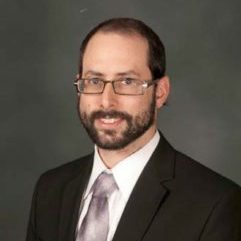“Any location that is populated by ten Jews is obligated to appropriate a house where they can congregate for prayer whenever it is time to pray. This place is called a Beis Hakneses.” (Rambam, Mishna Torah, Laws of Prayer, Chapter 12)
Residents may force each other to build a shul and (according to the Kitzur Shulchan Aruch) fine them if they do not help make the Minyan.
The main criteria for Beis Hakneses is community involvement.
This shouldn’t be surprising. Each Jew needed to donate at least half a Shekel to the building of the Mishkan, and these half-shekels were melted down to create the Adanim – the Base of the Mishkan. The strength of the Beis hamikdash came from it’s status as Tel Piyos – The Mountain toward which everyone prayed, and the daily Tamid needed to be financed by the Jewish people as a group. If a city was late in submitting it’s share of the Machazis Hashekel, the Bais Hamikdosh would put out money. The show could not go on without them.
To be sure many special men (and women) have single-handedly built shuls. Some of the most beautiful minyanim I have attended have been in private homes. Many Tzadikim daven at minyanim in their homes and today’s Kiruv movement is all about one community building a shul for another. But those shuls need to be sure that they have the cooperation and “$18” support of all of their congregants too – otherwise they are just a Minyan and not a “Beis Haknesses”. (Mishna Berura in OC 687)
Reb Yehuda Hanasi, author of the Mishna, had a yeshiva with hundreds of students. When Purim came he would close his Yeshiva and direct all of his students to the local shul where they could hear the Megilla. In Geonic times when many people would gather a Minyan in their homes on Purim and read the Megila for their friends and family, the Hagahos Ashri cited Rebi’s practice: If Reb Yehuda Hanasi left his Yeshiva to go to shul, we should certainly leave the coziness of our homes to hear the Megila in a Beis Hakneses.
I love walking into Shuls that were built during the Depression. Where did they find the money to build those buildings? And what about the immigrants from Europe after World War II – How did they manage to put up those shuls that we pass every day? To paraphrase Rabbi Berel Wein, they understood that they needed a Beis Haknesses and not a Base-ment.
“Any location that is populated by ten Jews is obligated to prepare a house where they can congregate for prayer whenever it is time to pray. This place is called a Beis Hakneses.”
(Note: I have been to several shuls lately. They were all great. With the exception of one gathering of snowed-in tzadikim on a Friday night , they were all bona fide Batei Knesios, Kein Yirbu)

0 Comments